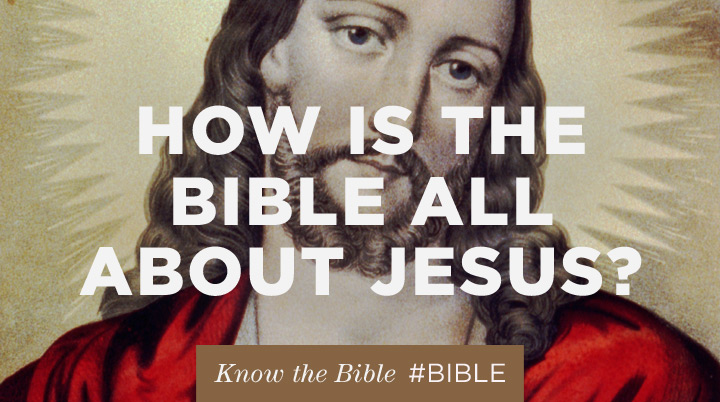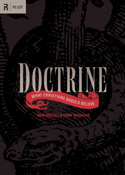Latest
-
Objections to the Christian Faith from the Unchurched and De-Churched
 Tue Dec 02, 2014
Tue Dec 02, 2014
by Resurgence -
Craig Groeschel: We Innovate for Jesus
 Tue Oct 14, 2014
Tue Oct 14, 2014
by Resurgence -
Mark Driscoll: Revelation
 Tue Oct 07, 2014
Tue Oct 07, 2014
by Resurgence -
RESURGENCE LEADERSHIP #034: JOHN PIPER, WHY I TRUST THE SCRIPTURES, PART 2
 Tue Sep 30, 2014
Tue Sep 30, 2014
by Resurgence -
Resurgence Leadership #033: John Piper, Why I Trust the Scriptures, Part 1
 Tue Sep 23, 2014
Tue Sep 23, 2014
by Resurgence

Archives
How is the Bible all about Jesus?

To understand Scripture, we need to recognize its Hero and see how he is revealed throughout the pages of both the Old and New Testaments.
Some people prefer the New Testament to the Old Testament because they wrongly believe that only the New Testament is about Jesus. However, Jesus himself taught that the Old Testament was primarily about him. While arguing with the theologians in his day, Jesus chastised them, saying, “You search the Scriptures [Old Testament] because you think that in them you have eternal life; and it is they that bear witness about me, yet you refuse to come to me that you may have life” (John 5:39-40).
Following his resurrection, Jesus opened the Old Testament to teach others about himself: “beginning with Moses and all the Prophets, he interpreted to them in all the Scriptures the things concerning himself” (Luke 24:27). Likewise, in speaking to his disciples, Jesus said, “These are my words that I spoke to you while I was still with you, that everything written about me in the Law of Moses and the Prophets and the Psalms must be fulfilled” (Luke 24:44). We then read that he “opened their minds to understand the Scriptures” (Luke 24:45).
Jesus himself taught that the Old Testament was primarily about him.
Jesus’ own words about himself as the central message of the Old Testament are pointedly clear. He said, “Do not think that I have come to abolish the Law or the Prophets; I have not come to abolish them but to fulfill them. For truly, I say to you, until heaven and earth pass away, not an iota, not a dot, will pass from the Law until all is accomplished” (Matt. 5:17-18). Jesus repeated this fact by throughout his ministry saying he “fulfilled” particular Scriptures (Matt. 26:56; Luke 4:20; 22:37).
Simply, when Scripture is rightly interpreted, it is ultimately about Jesus as God, our Savior. Therefore, to correctly interpret Scripture you will need to connect its verses, concepts, and events to Jesus.
The Old Testament uses various means to reveal Jesus, including promises, appearances, foreshadowing types, and titles.
1. Prophecies
The Old Testament teaches about Jesus in the numerous prophetic promises.
At the time of its writing, more than one-quarter of Scripture was prophetic in nature, promising future events. No other world religion or cult can present any specific prophecies concerning the coming of their prophets. However, in the Old Testament we see hundreds of fulfilled prophecies extending hundreds and sometimes over a thousand years into the future.
2. Christophanies
The Old Testament teaches about Jesus through appearances that he makes before his birth (i.e. Christophanies).
Examples include walking with Abraham (Gen. 18; cf. John 8:56), wrestling with Jacob (Gen. 32:30), appearing to Moses (Ex. 3:2-6; cf. John 8:58), joining the three in the fiery furnace (Dan. 3:24-25), and calling Isaiah into ministry (Isa. 6:1-5; cf. John 12:41). Other examples may include the occasional appearance of “the angel [messenger] of the Lord,” who is sometimes identified as God (Judg. 6:11-14; 13:22).
3. Types
Types are Old Testament representative figures, institutions, or events that foreshadow Jesus.
Examples include:
- Adam, who foreshadows Jesus as the second Adam
- The priesthood, which prefigures Jesus as our High Priest
- David and other kings, who prefigure Jesus as the King of kings
- Moses and the prophets, who prefigure Jesus as our ultimate Prophet
- Animal sacrifices, which prefigure Jesus as the sinless Lamb of God slain for our sins
- Many others, such as Jesus the true bread, the true vine, and true light
4. Like Service
We also see people in the Old Testament who perform various kinds of service that is analogous to the service that Jesus performs perfectly.
Unlike the first Adam, Jesus Christ is the Last Adam who passed his test in a garden and in so doing imputed his righteousness to us to overcome the sin imputed to us through the sin of the first Adam.
Jesus is the true and better Abel who, although he was innocent, was slain and whose blood cries out for our acquittal.
When Abraham left his father and home, he was doing the same thing that Jesus would do when he left heaven. When Isaac carried his own wood and laid down his life to be sacrificed at the hand of his father Abraham, he was showing us what Jesus would later do.
When Scripture is rightly interpreted, it is ultimately about Jesus as God, our Savior.
Jesus is the greater Jacob who wrestled with God in Gethsemane and, though wounded and limping, walked away from his grave blessed.
Jesus is greater than Moses in that he stands as a mediator between God and us, bringing us the New Covenant.
When Boaz redeemed Ruth and brought her and her despised people into community with God’s people, he was showing what Jesus would do to redeem his bride the church from all the nations of the earth.
5. Events
We also see various Old Testament events preparing people for the coming of Jesus Christ.
In the Exodus account of Passover (Exod. 12), the people were to place blood over the doorframe with hyssop and no one was to leave their home until the morning. By being marked with a lamb’s blood, death would not come to the home but would pass over it. Peter says our salvation is given by Jesus Christ and “sprinkling with his blood” (1 Pet. 1:2).
6. Titles
There are many titles for God in the Old Testament that refer to Jesus as God.
In Daniel 7:13-14, God is called the “son of man” and Jesus adopted that as his favorite title, using it some eighty times in the four Gospels. Jesus is the Suffering Servant that was promised in Isaiah (Isa. 42:1-4; 52:13-53). Jesus is also known by many other Old Testament titles for God, including:
- First and Last (Isa. 41:4, 6; cf. Rev. 1:17; 2:8),
- Light (Ps. 27:1; cf. John 1:9),
- Rock (Ps. 18:2; cf. 1 Cor. 10:4),
- Husband or Bridegroom (Hos. 2:16; cf. Eph. 5:28-33),
- Shepherd (Ps. 23:1; cf. Heb. 13:20),
- Redeemer (Hos. 13:14; cf. Titus 2:13; Rev. 5:9),
- Savior (Isa. 43:3; cf. John 4:42),
- Lord of Glory (Isa. 42:8; cf. 1 Cor. 2:8).
To properly understand the Old Testament we must connect it to the person and work of Jesus. The meaning of the Old Testament includes symbolism and identity that are most fully revealed in Jesus.
Unless Jesus is the central message of the Scriptures, many errors abound. The most common is moralizing. Moralizing is not reading the Bible to learn about Jesus, but only to learn principles for how to live life as a good person by following the good examples of some people and avoiding the bad examples of others. That kind of approach to the Scriptures is not Christian because it treats the Bible like any other book with moral lessons that are utterly disconnected from faith in and salvation from Jesus.
This post is an abridged excerpt from Doctrine: What Christians Should Believe, by Mark Driscoll, copyright © Crossway, 2010. Buy now and save 10% off the regular price when you use the discount code DOCTRINE10
